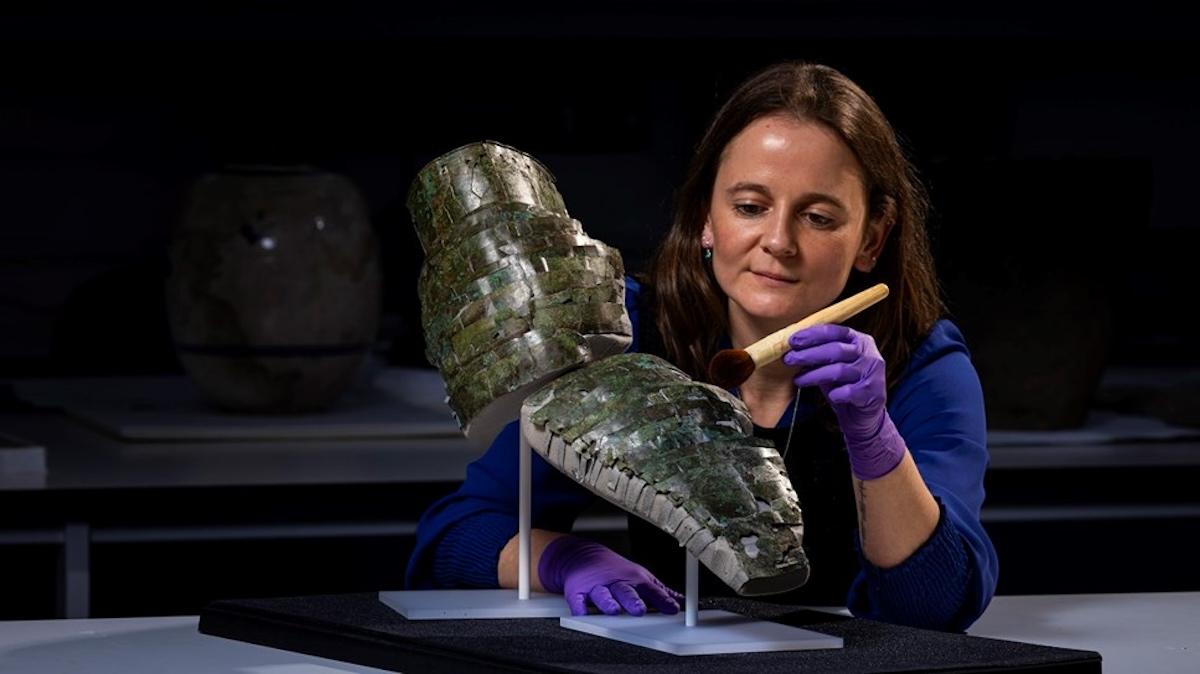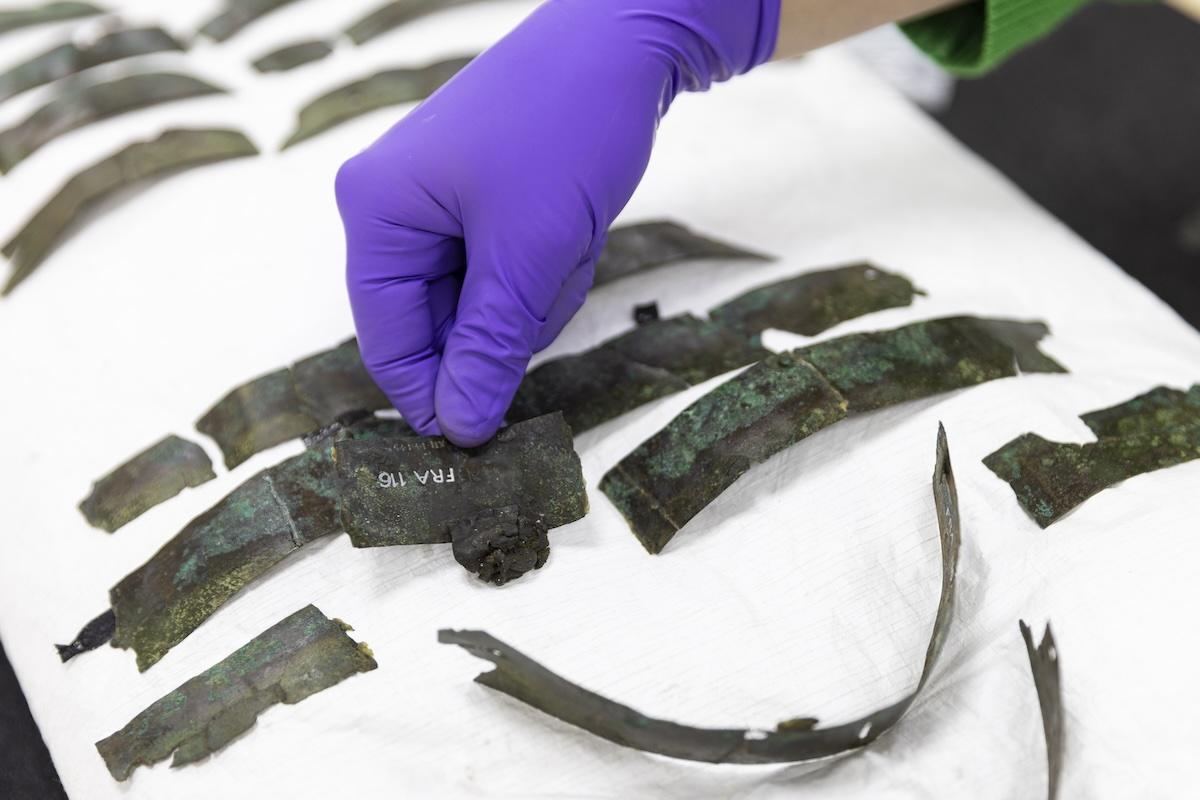Bethan Bryan, an assistant conservator at the museum who worked on the arm guard called it an “ancient jigsaw puzzle.” She said, “It was important to make sure we could display the piece in a manner as near as possible to how it would have looked 2,000 years ago. I’m thrilled that it can now be seen by audiences in a new light and has been preserved for generations to enjoy.”
Initially, researchers believed that it was just general body armor or perhaps a thigh guard for a cavalryman, but it was made clear in recent years that it was for a Roman soldier’s arm. The piece follows the design of a traditional arm guard: it stretches down from the wearer’s shoulder and ends in a thin square of metal, designed to protect the hand.
Dr. Hunter shared that the transformation was striking and gave researchers new insights to Roman military wear: “Now that it’s been reconstructed, you can picture the legionary who once wore it. It was both protection and status symbol – brass was expensive and would have gleamed like gold on his sword arm.”
























![DEl Kathryn Barton [Australian b. 1972] the more than human love , 2025 Acrylic on French linen 78 3/4 x 137 3/4 inches 200 x 350 cm Framed dimensions: 79 7/8 x 139 inches 203 x 353 cm](/sites/default/files/styles/image_5_column/public/ab15211bartonthe-more-human-lovelg.jpg?itok=wW_Qrve3)



